| Early Spring Date: | April 21 |
| Late Spring Date: | May 23 |
| Best Dates to See in Spring: | April 25 - May 5 |
Golden-winged Warbler
Vermivora chrysoptera
| Infrequently Seen |
Spring: Blue-winged Warblers are seen every spring at Monticello Park in small numbers. Sometimes, only one-to-three have been recorded for the entire spring. The best time to search for them is at the end of April and the beginning of May. The Golden-winged Warbler population has experienced a steep decline, and it is being considered for listing under the Endangered Species Act. In most years, none migrate through Monticello.
Fall: Very few Blue-winged Warblers have been recorded at Monticello during fall migration. The small number who pass through generally do so during the first two weeks in September. Golden-winged Warblers are seen as infrequently during fall migration as during spring migration.
Where to See Them in the Park
Both species sing a lot and forage from the understory to the mid-level of trees.
Physical Descriptions
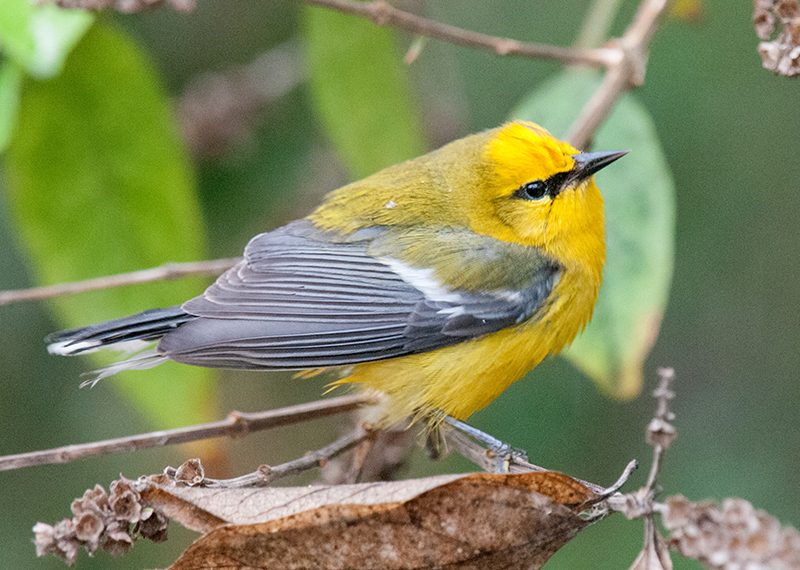
Blue-winged Warblers look very yellow. The head and underparts are yellow, and the back of the head and nape are olive. The wings are more bluish-gray than blue, with two white wingbars. The black line through the eye is a good fieldmark, although it can be difficult to see on a fast moving bird.
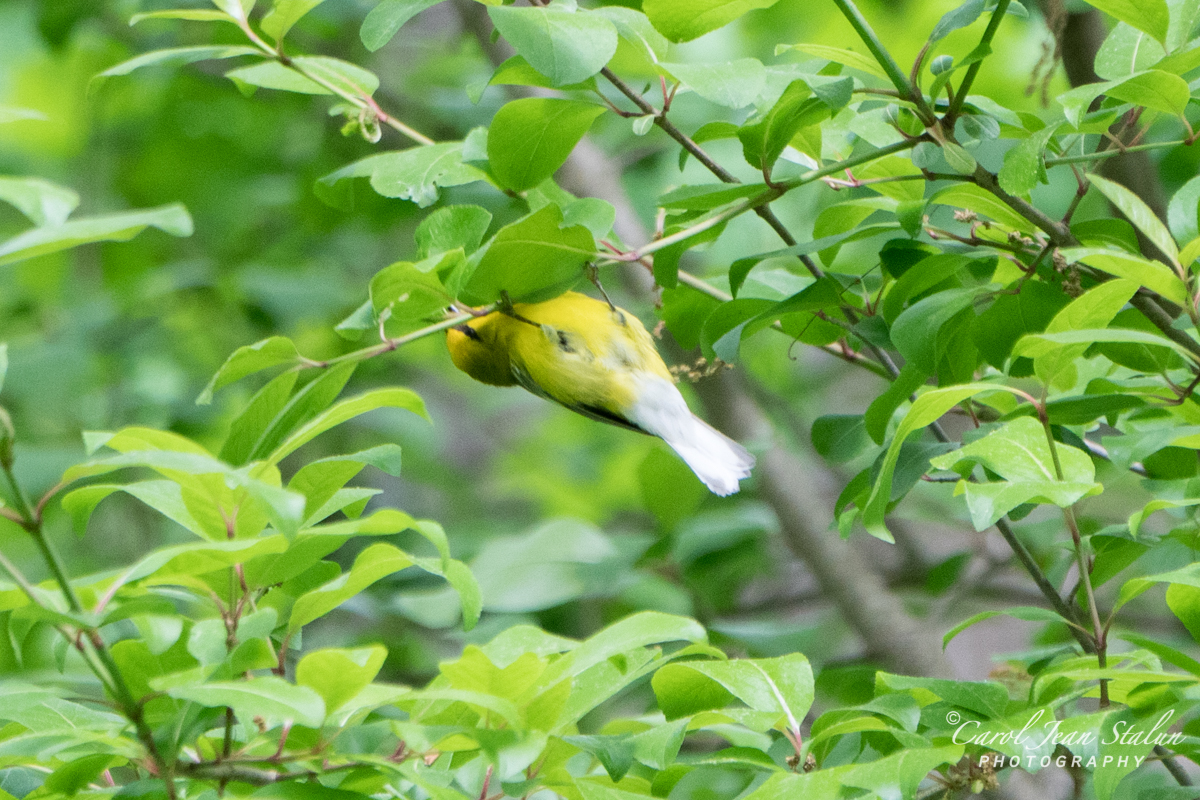
Blue-winged Warblers sometimes hang upside down from leaves and feed like chickadees. When they do this, you can see their yellow breast and belly and their white undertail coverts.
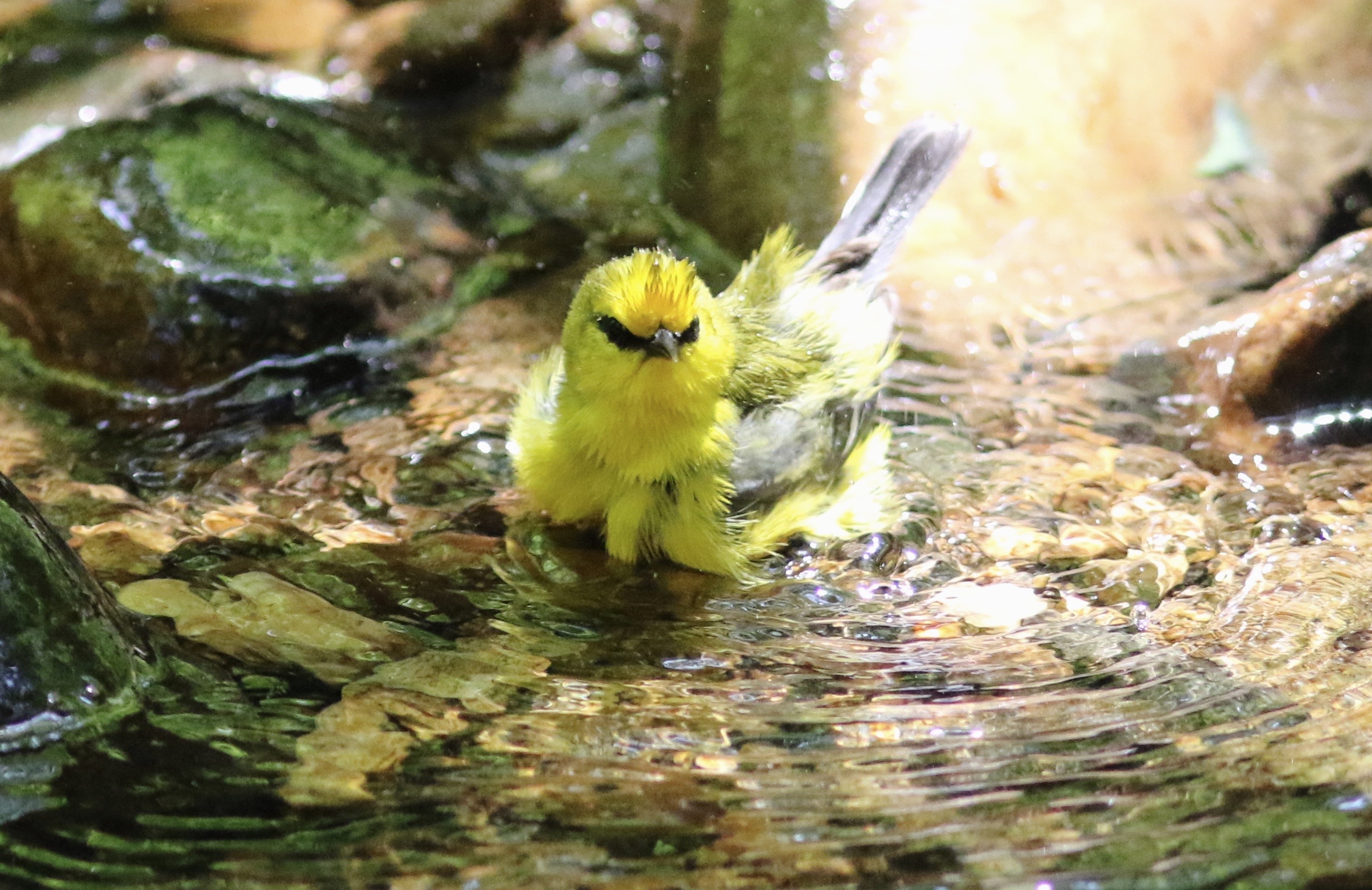
They sometimes have an "angry bird" appearance, especially when bathing.

The visibility of the wingbars varies, depending on the position of the wings and the sex of the bird. Females have narrower and less prominent wingbars, and they have more olive on the head.
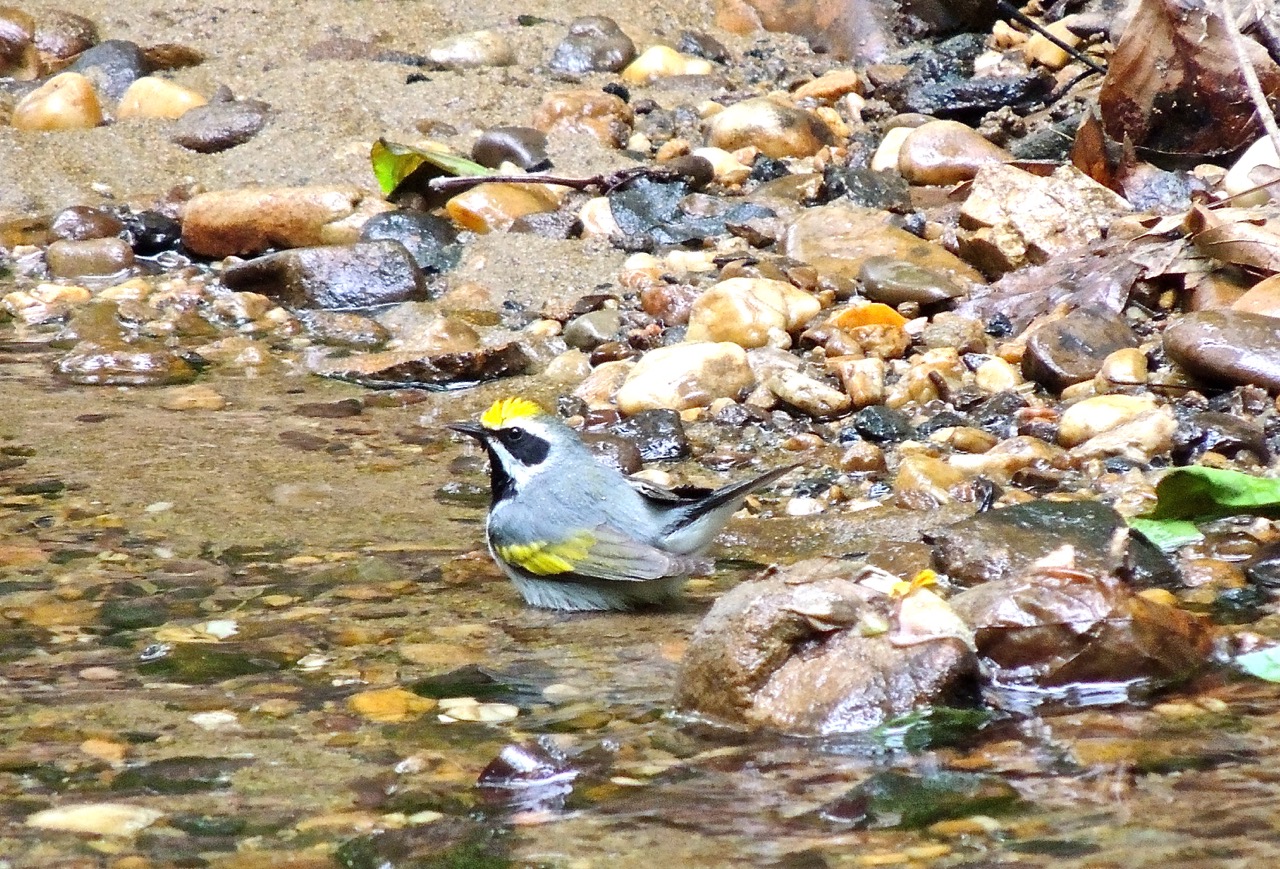
Golden-winged Warblers look gray, and you would never mistake one for a Blue-winged. The male has yellow on the wings and crown. He has a black mask with white borders, and his throat is black.
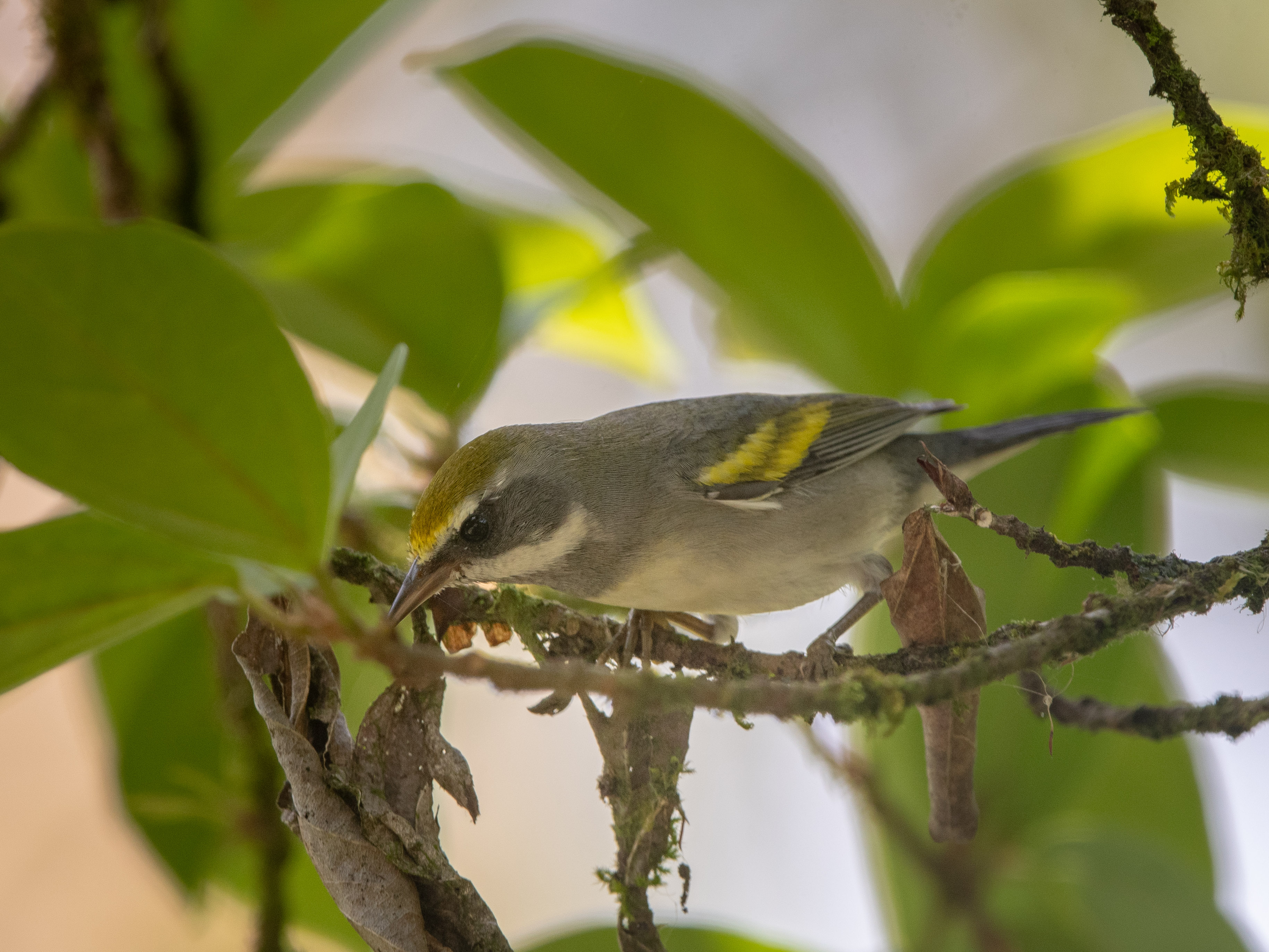
The female's mask and throat are gray rather than black, and the top of her head is olive rather than yellow.
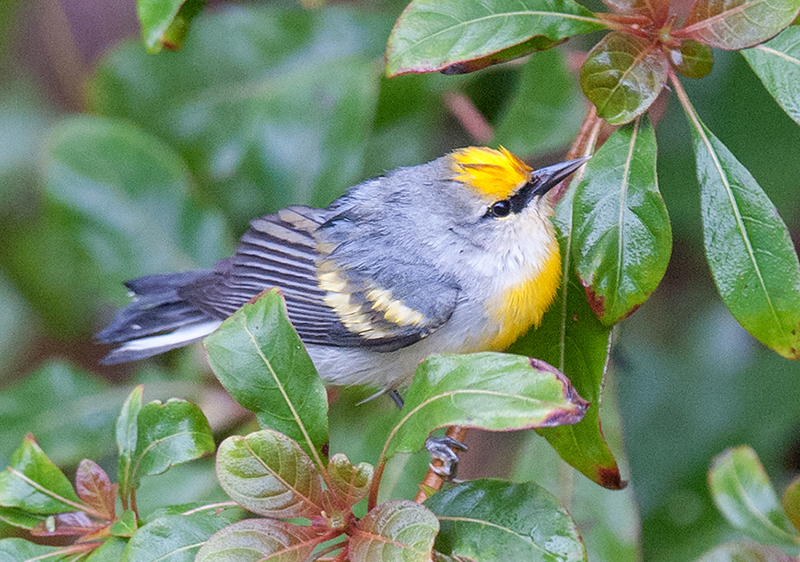
Blue-winged and Golden-winged Warblers often interbreed, creating a broad range of hybrids. The grayish ones are called Brewster's Warblers. They usually have yellowish wingbars, but some have white wingbars. The body is gray like on a Golden-winged. They have no mask, and they have a black eyeline like a Blue-winged. Brewster's Warblers have yellow on the breast like a Blue-winged, but the amount of yellow on the breast varies. Lawrence's Warblers are hybrids who are yellow like a Blue-winged and have a black mask and throat like a Golden-winged. Brewster's Warblers are more common than Lawrence's and will occasionally show up at Monticello. During the 1980s, a Lawrence's Warbler was in the same bush at Monticello as a Blue-winged, and people could observe the differences in plumage.
Fall: There is little difference between spring and fall plumage for both Blue-winged and Golden-winged Warblers.
Vocalizations
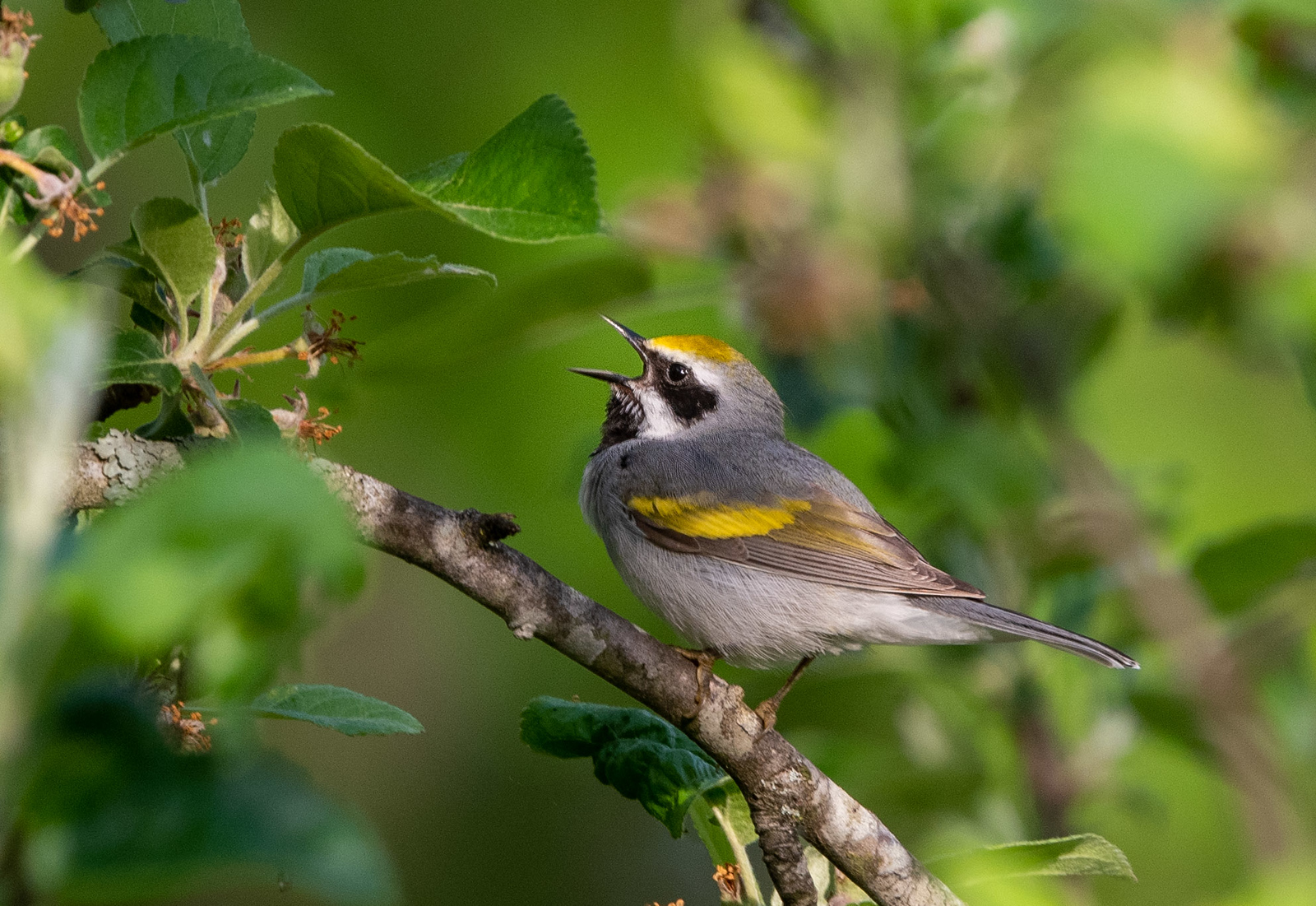
The two warblers have similar songs. The Blue-winged sings a single note followed by a raspberry-like sound — Bee-Buzzzzz. The Golden-winged sings a single note or short trill followed by two or three raspberries — Bee-Buzz-Buzz-Buzz. The songs are high-pitched and can be difficult to hear. Hybrids can sing either song, so when you hear a song that sounds like a Blue-winged or a Golden-winged, you can never be sure what you are hearing unless you see the bird.
Hear the song of the Blue-winged Warbler.
Hear the song of the Golden-winged Warbler.
Notes
The DNA of Blue-winged and Golden-winged Warblers is 99.97% the same. Some ornithologists suggest that they might be subspecies of the same species. This controversy has existed at least since the time of John James Audubon. Golden-winged Warblers breed around the Great Lakes and along the ridge of the Appalachian Mountains, including in Highland County, Virginia. Blue-winged Warblers have a broader breeding range within the northeast quarter of the United States. They used to nest at Little Bennett Park in Montgomery County, Maryland, but no longer. Both species breed in a variety of habitats that include stream borders with shrubs, power-line rights-of-way, swamp edges, and abandoned pastures. Efforts are being made to help Golden-winged Warblers in Maryland and Pennsylvania.
Origin of Names
Common Names: Blue-winged from the blue-gray wings. Golden-winged from the yellow on the wings. The New World Warblers were named for their similar appearance to European warblers, to whom they are not related. Most of the New World warblers do not warble (to sing continuously with notes that change frequently).
Genus Name: Vermivora means worm eating.
Species Names: Cyanoptera means dark blue wings. Chrysoptera means gold wings.
Blue-winged Warbler video footage
Golden-winged Warbler video footage
Blue-winged and Golden-winged Warblers and hybrids video footage
Return to the Index
